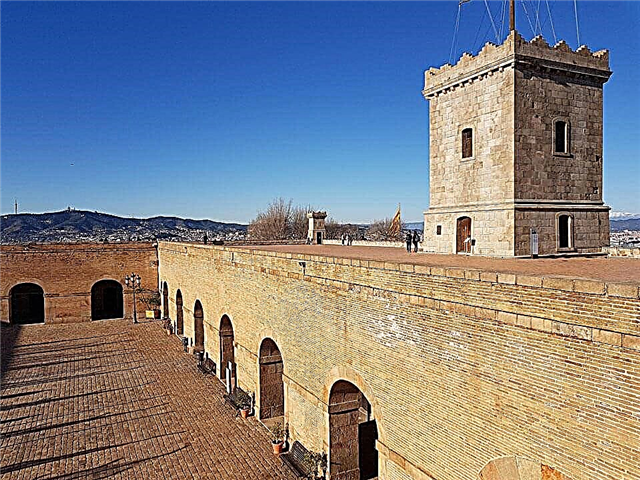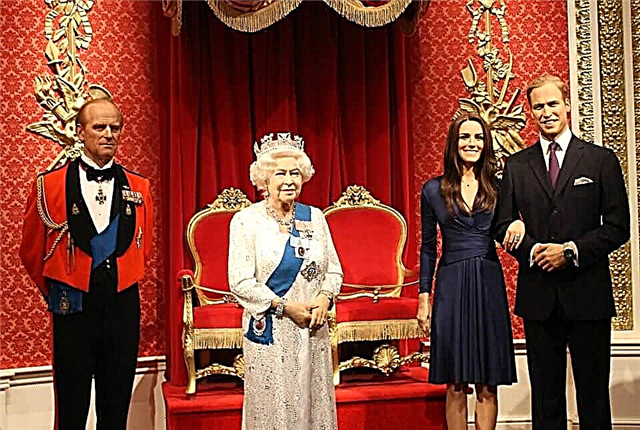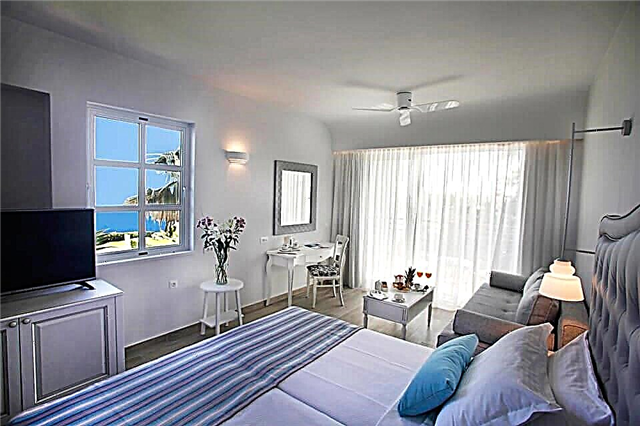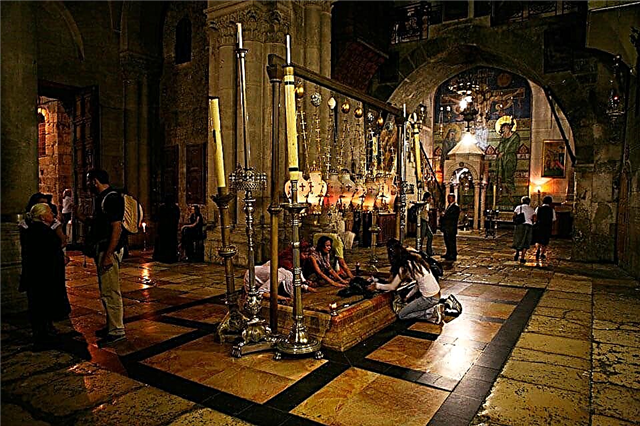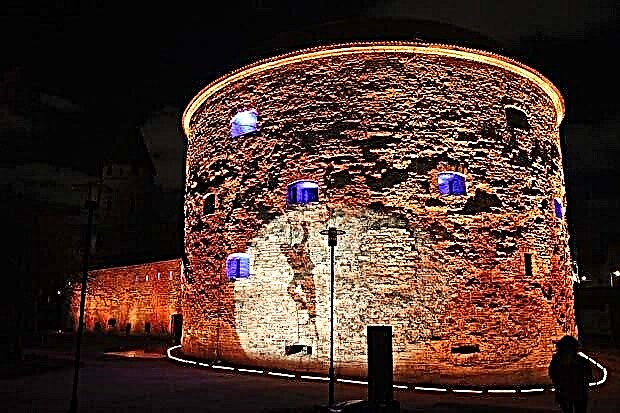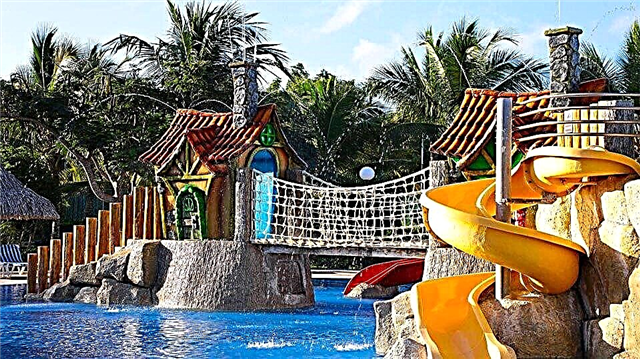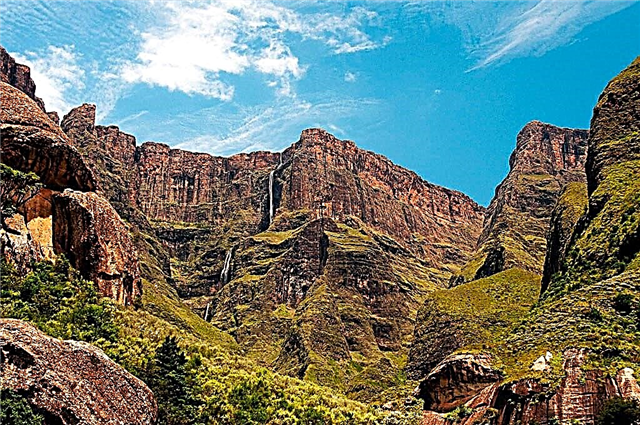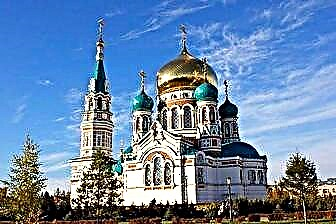One can speak of Omsk as a city with great potential for tourism development. Its sights and history attract lovers of cultural and educational travel, the vast expanses of the Siberian region, plains, forests and the banks of the Irtysh - adherents of outdoor recreation. The city and regional administrations are actively working to increase the attractiveness of the region. The plans include the creation of eco-routes (including water routes) and the development of skiing.
The names of F. M. Dostoevsky, who served exile here, and General A. V. Kolchak, who organized the headquarters in the city in 1918-1919, are associated with Omsk. The most interesting excursions to historical sites, one way or another, touch on the fate of these two outstanding personalities.

The best hotels and hotels at affordable prices.
from 500 rubles / day
What to see and where to go in Omsk?
The most interesting and beautiful places for walking. Photos and a short description.
Assumption Cathedral
The first Assumption Cathedral was built in Omsk at the end of the 19th century, but it did not survive the persecution of religion during the Soviet era - by order of the city administration, the building was blown up. For a long time, a city park was located in its place. The decision to rebuild the temple was made in 2005. The work went on rather quickly, and after a couple of years the new cathedral was consecrated.

Tara Gate
In the 18th century, the Tara Gate was part of the Omsk fortress. The original monument was dismantled in the 1950s and restored only in 1991 for the 275th anniversary of the city. The new building did not become a complete copy of the old one, since the architects took significant liberties with the reconstruction. From the Omsk fortress itself, several entrance gates and civil buildings have survived, the rest of the parts were lost by the beginning of the 20th century.

Buchholz square
The square is located near the river station. The place was named in honor of Major General I. Buchholz, who, by order of Peter I, drove nomadic tribes out of the territory of the future city (later a fortress was laid here). Today, the square is a space decorated with landscaped lawns and alleys. In the center there is a modern sculpture "Derzhava", which depicts various stages of the development of Siberia.

Irtysh embankment
Irtyshskaya embankment is the main walking street of the city and one of the favorite places of the townspeople. It was built in the middle of the 20th century, but after a few decades, due to lack of maintenance, it fell into disrepair. In the 2000s, the embankment was reconstructed, returning it to a decent look. You can walk along the alley on foot, ride rollerblades, bicycles or relax on the steps leading down to the Irtysh.

Chokan Valikhanov pedestrian street
The street is located in the historical part of Omsk. In 2014, part of the alley was reconstructed and turned into a pedestrian zone. Since then, it has become the Omsk Arbat. The street is decorated with abstract architectural forms, flower beds, wrought-iron lanterns. The walking area ends with a platform with a picturesque view of the Irtysh.

Monument to the locksmith Stepanych
An unusual sculpture in the center of Omsk, which you can literally stumble upon while walking along the street. Lenin. The plumber is depicted as realistically as possible and in full size - Stepanych is getting out of the sewer manhole, leaning on an iron lid, at the same time he watches the bustle of the city with curiosity. There is a similar sculpture in the capital of Slovakia, Bratislava.

Sculpture "Lyuba"
The sculpture depicts a very specific person - the wife of the Governor-General of Siberia Gustav Gasford (the woman's name was Lyubov). In the 19th century, on the site where the monument is located, a grove grew, which after the death of Lyuba was named in her honor. Sculptors recreated the image from historical records, since not a single portrait of a woman has survived.

Omsk Academic Drama Theater
One of the oldest drama theaters in Siberia, founded in 1874. Many outstanding actors and directors have come from here. The stage building was built in 1882 in the eclectic style - a mixture of classicism and baroque. The facade and walls are decorated with columns, balustrades, intricate ornamentation, and decorative turrets. In the niches there are busts of A.P. Chekhov and Leo Tolstoy, on the front - the statue "Winged Genius".

Musical Theatre
The music scene was founded in the middle of the 20th century. Initially, comedies predominated in the repertoire. The performances were so successful and popular that the theater received state prizes and awards more than once. In 1981, the stage moved to a new building, built in a modern (at that time) architectural style. In shape, it resembles a part of a ship's mast and a wide ski slope.

Museum named after M.A.Vrubel
The gallery is considered the real pride of Omsk. Her collection is a collection of objects from various genres of fine art from antiquity to the present day. The exposition is located in the 19th century building - the former governor's palace, built according to the project of FF Wagner. The museum is the largest repository of works of art in the region, there are more than 24 thousand exhibits in its funds.

Literary Museum named after F.M. Dostoevsky
The institution was founded in 1975. At first it worked as a branch of the Local History Museum and used its funds for exhibitions. Its own permanent exhibition started in 1983. At the moment, the museum is located in the former commandant's house of the Omsk fortress, built in 1799. F. Dostoevsky lived in this building during his exile.

Museum of Kondraty Belov
K. Belov is a landscape painter, a native of Omsk. The museum named after him is housed in a picturesque wooden house, which is considered one of the most interesting architectural monuments of the city. The exposition tells about the life and work of K. Belov, as well as about the history of the building itself. Every year the museum hosts exhibitions where contemporary Omsk masters bring their works.

Museum complex of military glory of Omsk people
Residents of Omsk made an invaluable contribution to the Victory, performing feats at the front and selflessly working in the rear. A museum dedicated to the memory of these people was founded in 1985 at the initiative of the Committee of WWII Veterans. The exposition consists of items from the war years: personal belongings, weapons, photographs, children's toys, letters. There is also an open-air exhibition where you can see military equipment.

Museum of History and Local Lore
The Museum of Local Lore has not only its own exposition, but is also a platform for demonstrating collections from Moscow, St. Petersburg, large Siberian cities and other countries. The institution was founded in 1878, today it is one of the oldest in Siberia. The museum often takes part in international exhibitions, where it wins prestigious awards.

Library named after Pushkin
A large scientific library founded at the beginning of the 20th century. For more than 100 years of existence, the book collection has accumulated 3.5 million copies. Despite the fact that the format of libraries is a bit outdated in our time, about 200 thousand people are regular visitors of the institution. The collection is housed in a monumental 1980s building that is simply gigantic.

The mansion of the merchant Batyushkin
The manor house of the early XX century, which belonged to the local merchant A. Batyushkin. For its time, the building was innovative, since the representatives of the merchant class mainly owned wooden houses. Unfortunately, the name of the architect has not survived. The building was erected in an eclectic manner with the predominant features of late classicism. In 1918-1919 the headquarters of A. Kolchak was located in the estate.Nowadays, the registry office is located on its territory.

Fire Tower
The stone watchtower was erected at the beginning of the 20th century, before that a wooden building of 1870 was located in its place, which performed the same functions. The building was used for its intended purpose until the 1940s, after which it was declared an architectural monument. Inside the tower, there are museum expositions dedicated to the fire brigade and the history of the tower's construction.

Nikolsky Cossack Cathedral
The temple was built with the money of the Omsk Cossacks in the first half of the 19th century. Until 1918, the original Yermak banner was kept in the church, but it was lost during the Civil War and was later replaced with a copy. The church was built in the style of late classicism according to the project of V. Stasov. Particles of the relics of Seraphim of Sarov and Theodosius of Chernigov are kept inside.

Holy Cross Cathedral
Along with the Nikolsky Cathedral, the Holy Cross Exaltation is the oldest church in Omsk - it was erected in 1867. At that time, it was located in one of the poorest areas of the city, but, nevertheless, residents willingly donated for construction. In the 1930s, the authorities decided to demolish the church, but it was miraculously saved. In the 1940s, the cathedral was returned to the Orthodox community altogether.

Seraphim-Alekseevskaya chapel
A tent chapel of the early 20th century, erected in honor of the birth of the heir to the throne, Tsarevich Alexei Romanov, as well as in memory of the inhabitants of Omsk who died in the Russo-Japanese War (as evidenced by a memorial plaque). The historic building was destroyed in 1927. In the 1990s, the chapel was rebuilt in its old place based on preserved pre-revolutionary photographs.

Achair monastery
Convent of the late 19th century, located in the village of Achair, about 50 km from Omsk. During the Soviet era, the complex was closed and plundered; its revival took place in the 1990s. After resuming the work of the monastery, a mineral spring was discovered on its territory, which, after the blessing of Patriarch Alexy II, was declared a saint. The fame of the Achair water immediately spread as healing.

"Arena Omsk"
Multipurpose sports complex for 10 thousand spectators. The site was built as an ice rink adapted for hockey matches. It is home to the local teams Avangard and Omsk Hawks. The arena was built in 2007. Since then, she managed to host two European championships in ballroom dancing, several World Ice Hockey Cups among youth teams and a concert by the Scorpions.

Park of Culture and Leisure named after the 30th anniversary of the Komsomol
City park with an area of more than 60 hectares, adapted for recreation and entertainment. There are attractions, a zoo and an ostrich farm, a karting track and a rope park. You can ride boats or catamarans on the pond. During mass holidays (New Year, Victory Day, Maslenitsa, City Day, etc.), festivities are organized here.
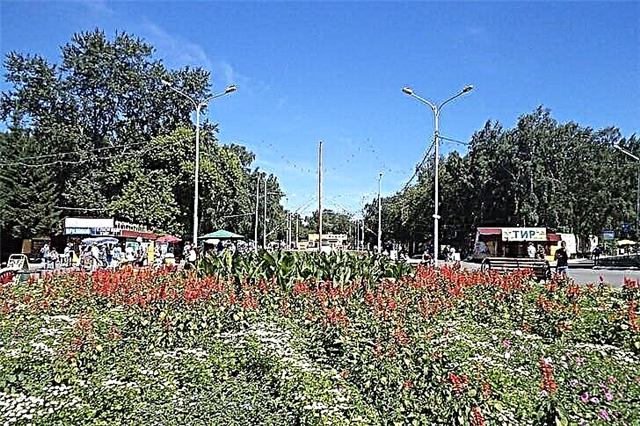
"Bird's Harbor"
Protected natural area in the center of Omsk, which is of key importance for the maintenance of the ecosystem. The zone is located on the path of migration of birds, which stop here during autumn migrations in huge numbers (several thousand individuals). In total, more than 150 species nest in the "Bird Harbor". In addition to birds, 19 species of mammals live here.

Irtysh river
The Irtysh crosses the territories of Russia, Kazakhstan and China. The length of the waterway is more than 4 thousand km (which even exceeds the size of the Oka River); its source is hidden in the depths of the Mongolian Altai. There are several large settlements along the Irtysh, including Omsk. The coastal zone of the river is an inexhaustible source of resources for eco-tourism lovers.


